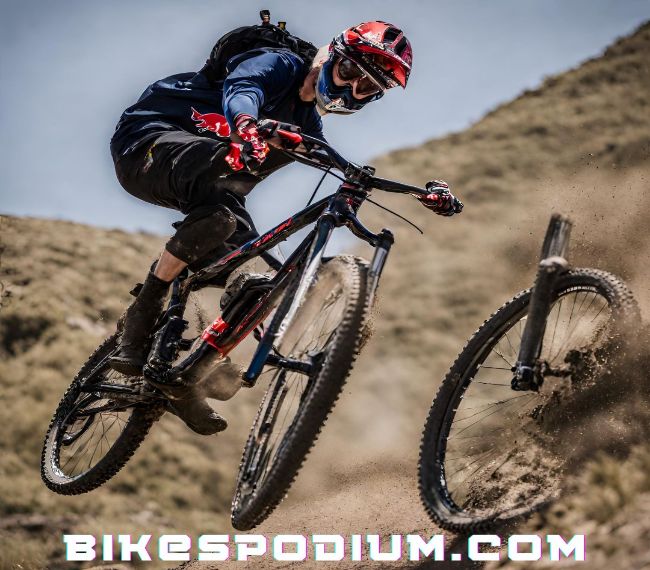Tire pressure plays a crucial role in the performance and safety of your mountain bike. Whether you’re a seasoned rider or just starting out, optimizing your tire pressure can greatly enhance your overall biking experience. In this comprehensive guide, we will delve into the importance of tire pressure, factors to consider, and provide practical tips to help you find the perfect tire pressure for your mountain bike.
Why is Tire Pressure Important?
Tire pressure affects various aspects of your mountain biking experience, including speed, control, comfort, and traction. Maintaining the appropriate tire pressure ensures optimal performance and a safer ride. Here are some key reasons why tire pressure is crucial:
- Speed: The right tire pressure can significantly impact your speed. Overinflated tires result in decreased rolling resistance, enabling you to ride faster on smoother surfaces. However, excessively high pressure can lead to a bumpy and uncomfortable ride on rough terrains. It is important to find a balance that allows for maximum speed without sacrificing comfort.
- Control: Proper tire pressure enhances your control over the bike. Lower pressure increases traction and provides better grip, improving your ability to navigate challenging terrains, corners, and obstacles. On the other hand, higher pressure may cause your tires to skid and reduce control. It is crucial to find the sweet spot that allows for optimal control without compromising safety.
- Comfort: Finding the right tire pressure can greatly contribute to your overall comfort while riding. Lower pressure absorbs more vibrations and shocks, resulting in a smoother and more enjoyable experience, especially on uneven surfaces. It is important to consider your personal comfort preferences and adjust the tire pressure accordingly.
- Traction: Tire pressure directly affects traction, which is crucial for maintaining stability and maneuverability. Lower pressure allows the tire to conform to the ground, increasing the contact patch and improving grip. This is particularly vital when riding in wet or muddy conditions. However, it is important to be cautious not to go too low with the tire pressure as it may result in pinch flats or rim damage.
Factors Affecting Tire Pressure
Determining the ideal tire pressure for your mountain bike involves considering several factors. These factors include:
- Rider Weight: Your weight plays a significant role in determining the appropriate tire pressure. Heavier riders generally require higher pressure to prevent pinch flats, while lighter riders can benefit from lower pressure for better traction. It is important to find the right balance based on your weight to optimize performance and safety.
- Terrain: The type of terrain you ride on influences the optimal tire pressure. For smoother surfaces, higher pressure can enhance speed and efficiency. Conversely, when riding on rough terrains or trails with obstacles, lower pressure provides better grip and control. It is important to assess the terrain you will be riding on and adjust the tire pressure accordingly.
- Tire Width: The width of your mountain bike tires affects the ideal pressure. Wider tires naturally allow for lower pressure, while narrower tires typically require higher pressure. It’s essential to check the manufacturer’s recommendations for your specific tire width. The manufacturer’s recommendations can serve as a starting point, but personal preferences and riding conditions should also be taken into account.
- Riding Style and Conditions: Aggressive riders who prefer a more dynamic riding style may opt for slightly lower tire pressure to maximize traction and control. Additionally, weather conditions, such as rain or snow, may warrant adjusting the tire pressure for better grip. It is important to consider your riding style and the specific conditions you will be riding in when determining the ideal tire pressure.
Finding the Perfect Tire Pressure
Now that we understand the importance of tire pressure and the factors influencing it, let’s explore some practical tips to help you find the perfect tire pressure for your mountain bike:
- Start with Manufacturer’s Recommendations: Check the sidewall of your tire or the manufacturer’s website for recommended tire pressure. These guidelines serve as an excellent starting point and ensure you’re within safe limits. However, keep in mind that personal preferences and riding conditions may require adjustments.
- Experiment with Different Pressures: Fine-tuning your tire pressure often requires experimentation. Begin with the recommended pressure and adjust accordingly based on your personal preferences and the terrain you’ll be riding on. Keep a record of the pressure you used and how it felt during your ride to help you make informed adjustments.
- Consider Tubeless Setup: Tubeless tires offer the advantage of lower rolling resistance and the ability to run lower pressures without the risk of pinch flats. If your bike allows for a tubeless setup, it’s worth considering for improved performance. Tubeless setups can provide a smoother ride and better traction, especially when running lower pressures.
- Invest in a Quality Pressure Gauge: A reliable pressure gauge is essential for accurately measuring tire pressure. Invest in a gauge with a wide range suitable for both high and low-pressure readings. This will ensure that you can consistently monitor and adjust your tire pressure as needed.
- Take Note of Conditions: Pay attention to the weather conditions and terrain you’ll be riding on. Adjust your tire pressure accordingly to optimize traction and control. Lower pressure may be more suitable for wet or loose terrains, while higher pressure can be beneficial for smoother surfaces. Always be mindful of the conditions and make adjustments as necessary to ensure a safe and enjoyable ride.
- Regularly Check and Maintain Tire Pressure: Tire pressure can naturally decrease over time due to air leakage. Make it a habit to check and maintain your tire pressure before each ride. Proper maintenance ensures consistent performance and safety. Keep a regular schedule for checking your tire pressure, and make adjustments as needed.
Conclusion
Finding the perfect tire pressure for your mountain bike is a crucial step in optimizing your riding experience. By considering factors such as rider weight, terrain, tire width, and riding style, you can fine-tune your tire pressure to achieve the desired level of speed, control, comfort, and traction. Experimentation, along with the manufacturer’s recommendations, will help you find the ideal tire pressure for your specific needs. Regularly maintaining proper tire pressure will ensure a safe and enjoyable mountain biking adventure every time!
FAQ
- Why is tire pressure important for mountain biking?
Tire pressure is important for mountain biking because it affects speed, control, comfort, and traction. Maintaining the appropriate tire pressure ensures optimal performance and a safer ride.
- What factors affect tire pressure for mountain biking?
Several factors affect tire pressure for mountain biking, including rider weight, terrain, tire width, and riding style. These factors influence the optimal tire pressure for speed, control, comfort, and traction.
- How can I find the perfect tire pressure for my mountain bike?
To find the perfect tire pressure for your mountain bike, start with the manufacturer’s recommendations as a guideline. Experiment with different pressures based on personal preferences and the terrain you’ll be riding on. Consider a tubeless setup for improved performance. Use a quality pressure gauge to accurately measure tire pressure. Regularly check and maintain tire pressure.
- Why should I regularly check and maintain tire pressure?
Regularly checking and maintaining tire pressure is important because it can naturally decrease over time due to air leakage. Proper maintenance ensures consistent performance and safety. Regularly checking tire pressure and making adjustments as needed will result in a safe and enjoyable mountain biking experience.



